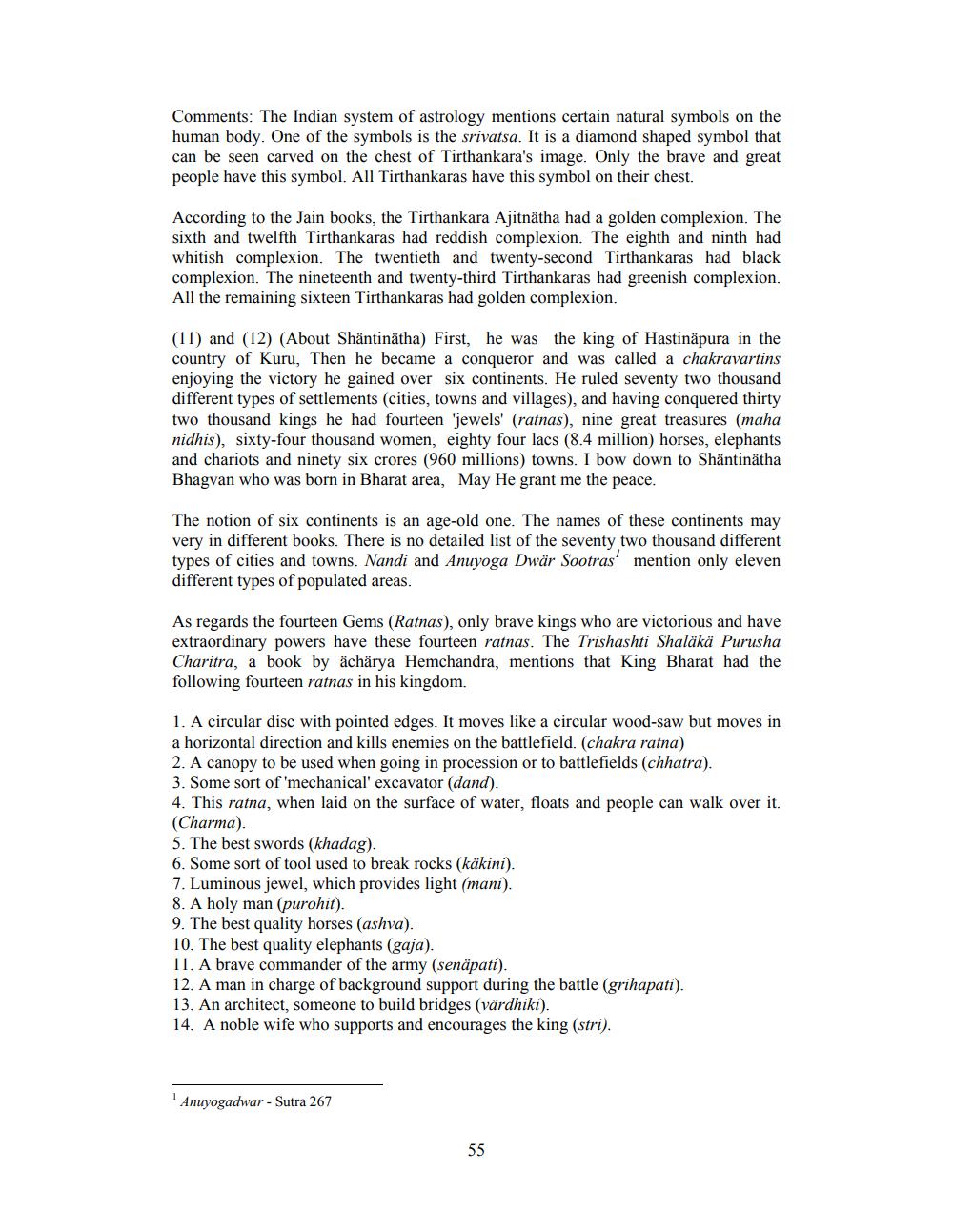________________
Comments: The Indian system of astrology mentions certain natural symbols on the human body. One of the symbols is the srivatsa. It is a diamond shaped symbol that can be seen carved on the chest of Tirthankara's image. Only the brave and great people have this symbol. All Tirthankaras have this symbol on their chest.
According to the Jain books, the Tirthankara Ajitnätha had a golden complexion. The sixth and twelfth Tirthankaras had reddish complexion. The eighth and ninth had whitish complexion. The twentieth and twenty-second Tirthankaras had black complexion. The nineteenth and twenty-third Tirthankaras had greenish complexion. All the remaining sixteen Tirthankaras had golden complexion.
(11) and (12) (About Shäntinätha) First, he was the king of Hastinapura in the country of Kuru, Then he became a conqueror and was called a chakravartins enjoying the victory he gained over six continents. He ruled seventy two thousand different types of settlements (cities, towns and villages), and having conquered thirty two thousand kings he had fourteen 'jewels' (ratnas), nine great treasures (maha nidhis), sixty-four thousand women, eighty four lacs (8.4 million) horses, elephants and chariots and ninety six crores (960 millions) towns. I bow down to Shäntinätha Bhagvan who was born in Bharat area, May He grant me the peace.
The notion of six continents is an age-old one. The names of these continents may very in different books. There is no detailed list of the seventy two thousand different types of cities and towns. Nandi and Anuyoga Dwär Sootras mention only eleven different types of populated areas.
As regards the fourteen Gems (Ratnas), only brave kings who are victorious and have extraordinary powers have these fourteen ratnas. The Trishashti Shaläkä Purusha Charitra, a book by ächärya Hemchandra, mentions that King Bharat had the following fourteen ratnas in his kingdom.
1. A circular disc with pointed edges. It moves like a circular wood-saw but moves in a horizontal direction and kills enemies on the battlefield. (chakra ratna) 2. A canopy to be used when going in procession or to battlefields (chhatra). 3. Some sort of 'mechanical' excavator (dand). 4. This ratna, when laid on the surface of water, floats and people can walk over it. (Charma). 5. The best swords (khadag). 6. Some sort of tool used to break rocks (käkini). 7. Luminous jewel, which provides light (mani). 8. A holy man (purohit). 9. The best quality horses (ashva). 10. The best quality elephants (gaja). 11. A brave commander of the army (senäpati). 12. A man in charge of background support during the battle (grihapati). 13. An architect, someone to build bridges (värdhiki). 14. A noble wife who supports and encourages the king (stri).
Anuyogadwar - Sutra 267




